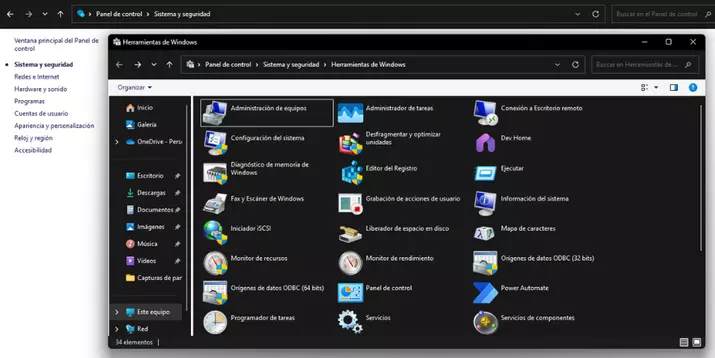Microsoft redesigned File Explorer with the release of Windows 11. It now has a more modern and organized interface, with tabs and improved search and customization features. Despite these changes, many users still miss the classic version of Windows 10. What few people know is that it's still possible to access the old explorer from the new operating system.
Windows 11 changed many things about Microsoft's software, but it also kept many others. The company still relies on legacy components from the Windows 95 era and doesn't easily ditch what they know works. That's why, when they rolled out the updated File Explorer, with tabs, new icons, and more, they kept the old version in storage. Users who have migrated from Windows 10 to 11 and prefer to keep the old Explorer just need to follow the steps outlined in this article.
The first thing you should do is open the Control Panel on your Windows computer. Then, go to "System and Security" and click "Windows Tools". Although it's not the File Explorer from the previous version of Microsoft's operating system, the interface is practically identical and performs the same functions. From there, users can access the same drives and folders they could access from Windows 10 Explorer, but in Windows 11.

Differences between File Explorer in Windows 10 and 11
The main difference between File Explorer in Windows 10 and 11 is that the new one is organized into tabs. Other interesting new features include command execution, a more modern start page powered by WinUI, context menus, activation of the Fluent Design language for all controls and styles, new icons, a new gallery section, and better integration with the system's own interface.
However, the current version has even added ads for other Apple services like OneDrive, something users have complained about. By using the Windows Tools section, you can avoid this advertising, which, while not intrusive, can be annoying.
Windows 10 will no longer have free support
Microsoft states on its official website that Windows 10 support will end on October 14, 2025. There are only a few months of updates left for this version of the operating system, after which there will be no more, neither technical support nor security. For this reason, many users are migrating to Windows 11 even though they prefer the previous version's interface.
Although Microsoft presents Windows 11 as its best version, it has never managed to surpass Windows 10 in the nearly four years since its release. According to data from StatCounter GlobalStats, it appears to be the closest to achieving this feat, due to the approaching end of support date for version 10 of the software.
As the chart of operating system statistics on StatCounter shows [image below], Windows 10 accounted for 48.89% in June 2025 compared to 47.83% for Windows 11. Going into May, the older version surpassed it by 10%, and by the end of 2024, the gap was almost 30%. As October 14th approaches, Windows 11's share is likely to finally rise to the top of the world's most used PC version.






